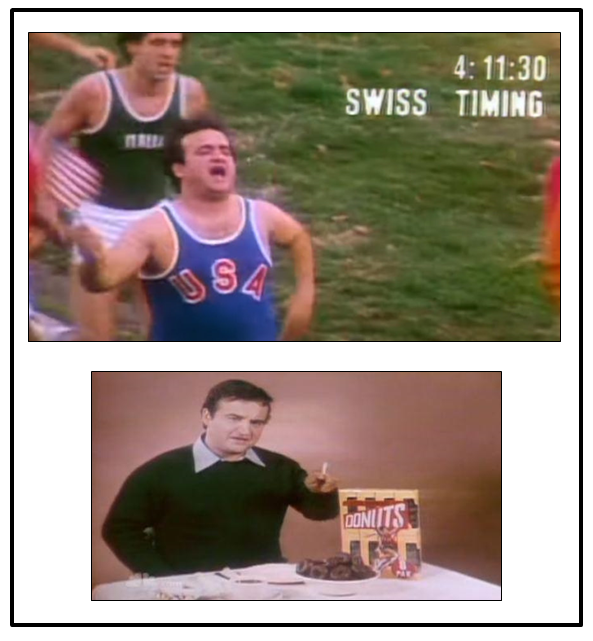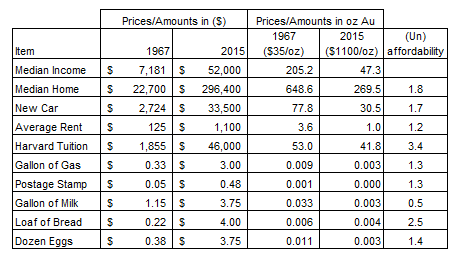Little Chocolate Donuts, the Olympics and the Fed's Dual Mandate
SUMMARY:
- In 1977, the Federal Reserve Act was amended to include 'Resolution 133,' which charged the Fed with creating maximum employment and stable prices.
- One year later, 1978's Humphrey-Hawkins Full-Employment Act made the recent changes to the Federal Reserve act more explicit and the Fed more accountable for meeting them.
- These changes gave the Fed more power when its then recent and enormous blunders should have prompted the the Fed's powers to be greatly reduced.
- Walter Bagehot, writing in the 19th century, provided the best definition of a central bank; 'to lend freely in a crisis but only against good collateral and only at high rates of interest.' In short, passive not active.
- The notion that a central bank - read central planners - can simultaneously produce full employment and low inflation makes as much sense as winning an Olympic gold medal while eating nothing but little chocolate donuts.
- More significantly, by providing the Fed a built-in excuse for letting the inflation genie out of the bottle, the Fed's dual mandate undermines not only the low inflation objective of the dual mandate, but the economic activity needed to achieve the high employment objective as well.
DISCUSSION:
Announcer: "Belushi's wont the gold, but now he is going for the world record! He is making his move there in the final turn, he's kicking it in..., he's done it! A new world record! Unbelievable! What a day for John Belushi!"
John Belushi: "I logged a lot of miles training for that day and I downed a lot of donuts, little chocolate donuts. They taste good and they've got the sugar to get me going in the morning. That why little chocolate donuts have been on my training table since I was a kid."

The notion of an Olympic athlete making little chocolate donuts the foundation of their training table is, of course, completely ludicrous. As will be described here, just as ludicrous is the Fed's dual mandate of promoting low inflation and full employment.
As with much of what the Fed has become, the Fed of today has almost nothing to do with the central bank the US was promised by the framers of the 1913 Federal Reserve Act. It was promised that the Fed would be a purely passive lender of last resort. However, as a result of what the military ruefully calls 'mission creep,' the Fed gained more and more power - power its founders never dreamed of. Among the many recent manifestations of this power were the $100+ billion bailout of AIG and the multi-trillion dollar rounds of quantitative easing (QE). However, a prerequisite for these obvious manifestations of unalloyed and unaccountable Fed power was something not so obvious; the Fed's dual mandate.
The dual mandate requires the Fed to pursue goals around inflation and employment. Specifically, the Fed is tasked with keeping inflation low and employment high. The fact that the Fed was explicitly tasked with this dual mandate in the late 1970s - when the Fed unleashed a massively destructive inflation firestorm on the US shouldn't be lost. The only thing the Fed can do to increase employment is to increase the money supply and thus produce inflation. The Fed's dual mandate is the economic equivalent of trying to lose weight by eating nothing but little chocolate donuts. In spite of its economic incoherence, the Fed's dual mandate is the law of the land, and the Fed continues to - futilely - attempt to achieve its dual mandate.
The practical ramification of the dual mandate's economic incoherence is it has allowed the Fed to be less vigilant about keeping inflation low. Whenever prices start to creep up, the Fed has a built in excuse - the Fed can deny responsibility by claiming it is attempting to fulfill the 'full employment' portion of its mandate. Some idea of just how badly the Fed has bungled the 'low inflation' portion of its mandate can be seen in Chart 1.
CHART 1:

The chart lists prices for several common items, as well as average incomes for the years 1967 and 2015. As a result of the collapsing value of the dollar - it is now worth ~2% of its 1971 equivalent in gold terms - it is not straightforward to compare prices and incomes across the time period of interest. When prices and incomes are simply measured in dollars they appear to be soaring - annual incomes rose from $7,181 per year to $52,000. Because money - whether it manifests itself as a paper currency issued by a central bank or a constitutionally proscribed amount of precious metal - is merely a store of wealth and a means of exchange, the Fed's 'success,' (or lack thereof), against its 'low inflation' objective is best demonstrated by comparing what the average person could purchase with their salary in 2015 versus 1967.
The last column in the chart measures how much more unaffordable everyday items have become to the average worker. This column computes the cost of an item on the basis of the median worker's income for both 2015 and 1967. A ratio of these two costs is then taken with the 2015 cost in the numerator. (Any ratio greater than 1.0 indicates that it takes more working hours to purchase the item in 2015 than it did in 1967.) For example, let's examine home prices. In 2015, a house cost the average worker 5.7-times their annual income (296,400/52,000). In contrast, in 1967 the median house cost the average worker just 3.06-times their average annual income (22,700/7,181). Measured, against the average worker's income, today's house costs 1.8-times more than its 1967 equivalent (5.7/3.06)! With the exception of a gallon of milk, every item in the chart has become more expensive to the average worker since 1967.
The Fed's dual mandate provides the Fed a built-in excuse to ignore inflation, and the data reviewed here indicates that inflation has been running rampant in the US for decades. However, not only does the Fed's dual mandate undermine the 'low inflation' portion of the mandate, the resulting high inflation ultimately undermines the low employment aspect as well. When companies seek to make investments in new plants and new equipment, they need to make predictions about the future. In an era distinguished by soaring prices, the confidence needed to proceed with large capital investments simply doesn't exist. As a result, economic growth stalls and takes employment with it.
As John Maynard Keynes wrote in The Economic Consequences of the Peace;
"By continuing a process of inflation, governments can confiscate, secretly and unobserved, an important part of the wealth of their citizens. There is no subtler, no surer means of overturning the existing basis of society than to debase the currency. The process engages all the hidden forces of economic law on the side of destruction and does it in a manner which not one man in a million is able to diagnose... Lenin is said to have declared that the best way to destroy the capitalist system was to debauch the currency. As the inflation proceeds and the real value of the currency fluctuates wildly from month to month, all permanent relations between debtors and creditors, which form the ultimate foundation of capitalism, become so utterly disordered as to be almost meaningless; and the process of wealth-getting degenerates into a gamble and a lottery."
So, the next time you hear of the Fed's 'dual mandate,' think 'little chocolate donuts.
Peter Schmidt
August 15, 2021
Sugar Land, Texas
PS - As always if you like what you read, please consider registering with the site. It just takes an e-mail address, and I don't share this e-mail address with anyone. The more people who register with the site, the better case I can make to a publisher to press on with publishing my book! Registering with the site will give you access to the entire Confederacy of Dunces list as well as the Financial Crisis timeline. Both of these are a treasure trove of information on the crisis and the long-running problems that led to it.
Help spread the word to anyone you know who might be interested in the site or my Twitter account. I can be found on Twitter @The92ers

